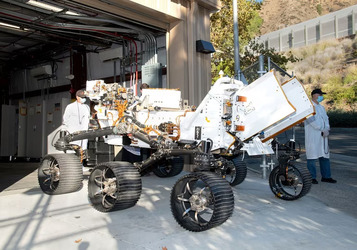The week's pick
Random Articles
Reseach Article
Comparative Analysis of the Circle Fitting Empirical Method and the International Telecommunication Union Parabola Fitting Method for Determination of the Radius of Curvature for Rounded Edge Diffraction Obstruction
| Communications on Applied Electronics |
| Foundation of Computer Science (FCS), NY, USA |
| Volume 7 - Number 24 |
| Year of Publication: 2018 |
| Authors: Simeon Ozuomba, Constant Kalu, Henry Johnson Enyenihi |
 10.5120/cae2018652803
10.5120/cae2018652803
|
Simeon Ozuomba, Constant Kalu, Henry Johnson Enyenihi . Comparative Analysis of the Circle Fitting Empirical Method and the International Telecommunication Union Parabola Fitting Method for Determination of the Radius of Curvature for Rounded Edge Diffraction Obstruction. Communications on Applied Electronics. 7, 24 ( Dec 2018), 16-21. DOI=10.5120/cae2018652803
Abstract
In this paper, comparative analysis of the circle fitting empirical method and the parabola fitting method for determination of the radius of curvature for rounded edge diffraction obstruction was presented. Sample elevation profile data for a 40 Km path with hilly obstruction was collected using web-based Geocontext elevation profile tool. The maximum elevation of 307.4569 m occurred at a distance of 35966.33 m the maximum elevation point from the transmitter. The two radius of curvature methods were applied to the elevation data. The exact radius of curvature based on the circle fitting empirical method is 38,375.22 m whereas the radius of curvature based on the International Telecommunication Union (ITU) parabola fitting method is 34, 029.98 m. Furthermore, while the radius by the empirical circle fitting method remained the same under different microwave frequencies, for the ITU parabola fitting method, there was over 89 % reduction in the radius of curvature from 60,369.69 m at 1 GHz L-band microwave frequency to 11,476.36 m at 12 GHz Ku-band microwave frequency. The essence of this study is to demonstrate the wide variation in the radius of curvature due to the frequency and also to advise that the ITU method may be used only when the ITU method of rounded edge diffraction loss is employed. The other rounded edge diffraction loss methods can use other approximation methods that compare favorably with the exact radius in all frequencies.
References
- Zheng, L., Lu, N., & Cai, L. (2013). Reliable Wireless Communication Networks for Demand Response Control. IEEE Trans. Smart Grid, 4(1), 133-140.
- Akyol, B. A., Kirkham, H., Clements, S. L., & Hadley, M. D. (2010). A survey of wireless communications for the electric power system (No. PNNL-19084). Pacific Northwest National Lab.(PNNL), Richland, WA (United States).
- Omogbadegun, Z. O., & Ayo, C. K. (2007). Impact of mobile and wireless technology on healthcare delivery services. 3GSM & Mobile Computing: An Emerging Growth Engine for National Development, 164-171.
- Valenzuela, R. A., & Kocan, K. F. (2005). Future wireless communications. Bell Labs Technical Journal, 10(2), 1-3.
- Niu, Y., Li, Y., Jin, D., Su, L., & Vasilakos, A. V. (2015). A survey of millimeter wave communications (mmWave) for 5G: opportunities and challenges. Wireless Networks, 21(8), 2657-2676.
- Al-Hourani, A., Kandeepan, S., & Jamalipour, A. (2014, December). Modeling air-to-ground path loss for low altitude platforms in urban environments. In Global Communications Conference (GLOBECOM), 2014 IEEE (pp. 2898-2904). IEEE.
- Geng, Y., He, J., & Pahlavan, K. (2013). Modeling the effect of human body on TOA based indoor human tracking. International Journal of Wireless Information Networks, 20(4), 306-317.
- Savazzi, S., Guardiano, S., & Spagnolini, U. (2013). Wireless sensor network modeling and deployment challenges in oil and gas refinery plants. International journal of distributed sensor networks, 9(3), 383168.
- Garg, V. (2010). Wireless communications & networking. Elsevier.
- Goldsmith, A. (2005). Wireless communications. Cambridge university press.
- Kasampalis, S. (2018). Modelling and coverage improvement of DVB-T networks (Doctoral dissertation, Brunel University London).
- Abdulrasool, A. S., Aziz, J. S., & Abou-Loukh, S. J. (2017). Calculation Algorithm for Diffraction Losses of Multiple Obstacles Based on Epstein–Peterson Approach. International Journal of Antennas and Propagation, 2017.
- Zang, J., & Wang, X. (2017). Measurements and Modeling of Path Loss over Irregular Terrain for Near-Ground and Short-Range Communications. Progress In Electromagnetics Research, 57, 55-62.
- Cid, E. L. (2017). Lms and h-satcom channels characterization at x and ku bands (Doctoral dissertation, Universidade de Vigo).
- Filiposka, S., & Trajanov, D. (2011). Terrain-aware three-dimensional radio-propagation model extension for NS-2. Simulation, 87(1-2), 7-23.
- Kumar, K. A. M. (2011). Significance of Empirical and Physical Propagation Models to Calculate the Excess Path Loss. Journal of Engineering Research and Studies E-ISSN, 976, 7916.
- Milanović, J., Rimac-Drlje, S., & Majerski, I. (2010). Radio wave propagation mechanisms and empirical models for fixed wireless access systems. Tehnički vjesnik, 17(1), 43-53.
- Uko, M. C., Udoka, U. E., & Nkwocha, C. P. (2017). Parametric Analysis of Isolated Doubled Edged Hill Diffraction Loss Based on Rounded Edge Diffraction Loss Method and Different Radius of Curvature Methods. Mathematical and Software Engineering, 3(2), 217-225.
- Poisel, R. (2011). Modern Communications Jamming: Principles and Techniques. Artech House.
- Vélez, M. M., Angueira, P., De la Vega, D., Arrinda, A., Ordiales, J. L., & Vicente, A. S. (2000). Ground Profile Analysis Algorithm To Improve Multiple Diffraction Loss Estimation. In Proceedings Of The International Symposium On Antennas And Propagation Japan (Vol. 3, pp. 1347-1350).
- Series, P. (2018 ). Propagation by diffraction. Recommendation ITU-R P.526-14. Available at https://www.itu.int/dms_pubrec/itu-r/rec/p/R-REC-P.526-14-201801-I!!PDF-E.pdf. Accessed on November 12 2018.
- Akkasli, C. (2009). Methods for Path loss Prediction. Master thesis at School of Mathematics and Systems Engineering
Index Terms
Keywords

